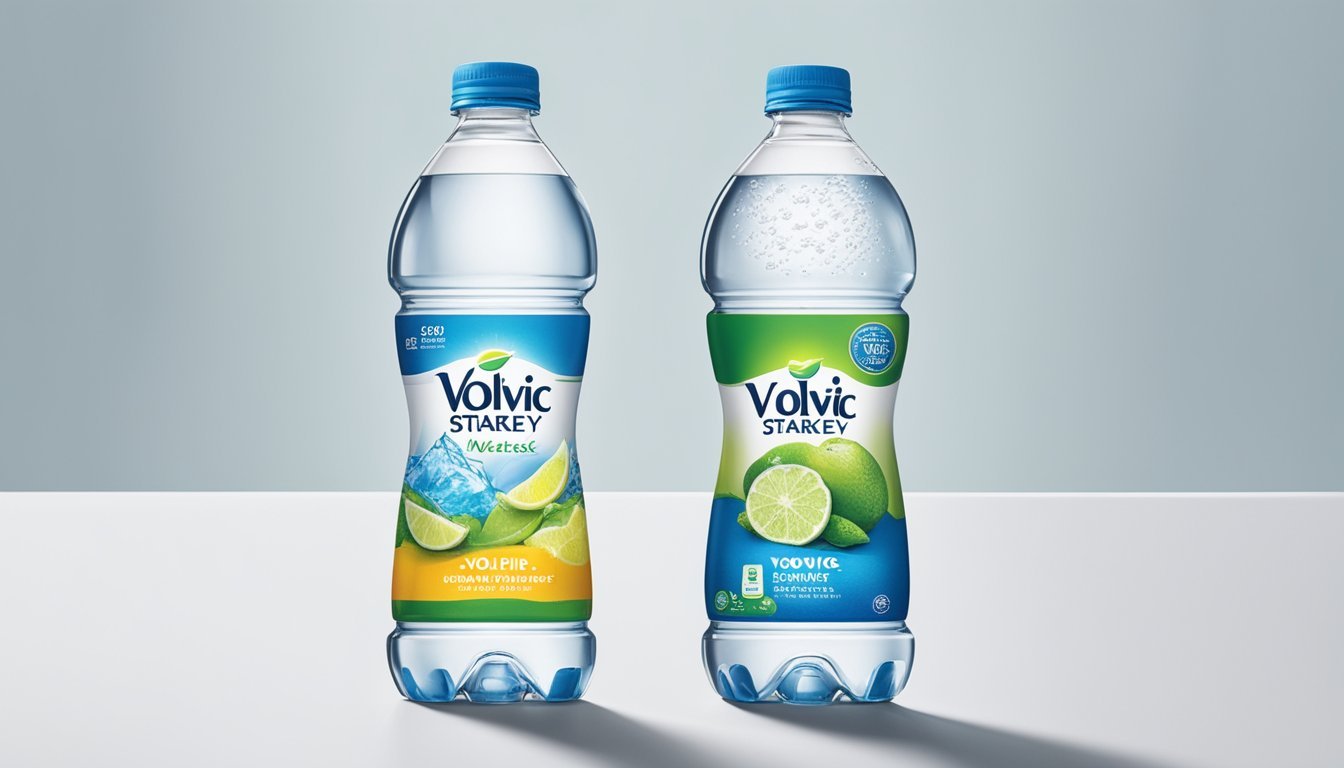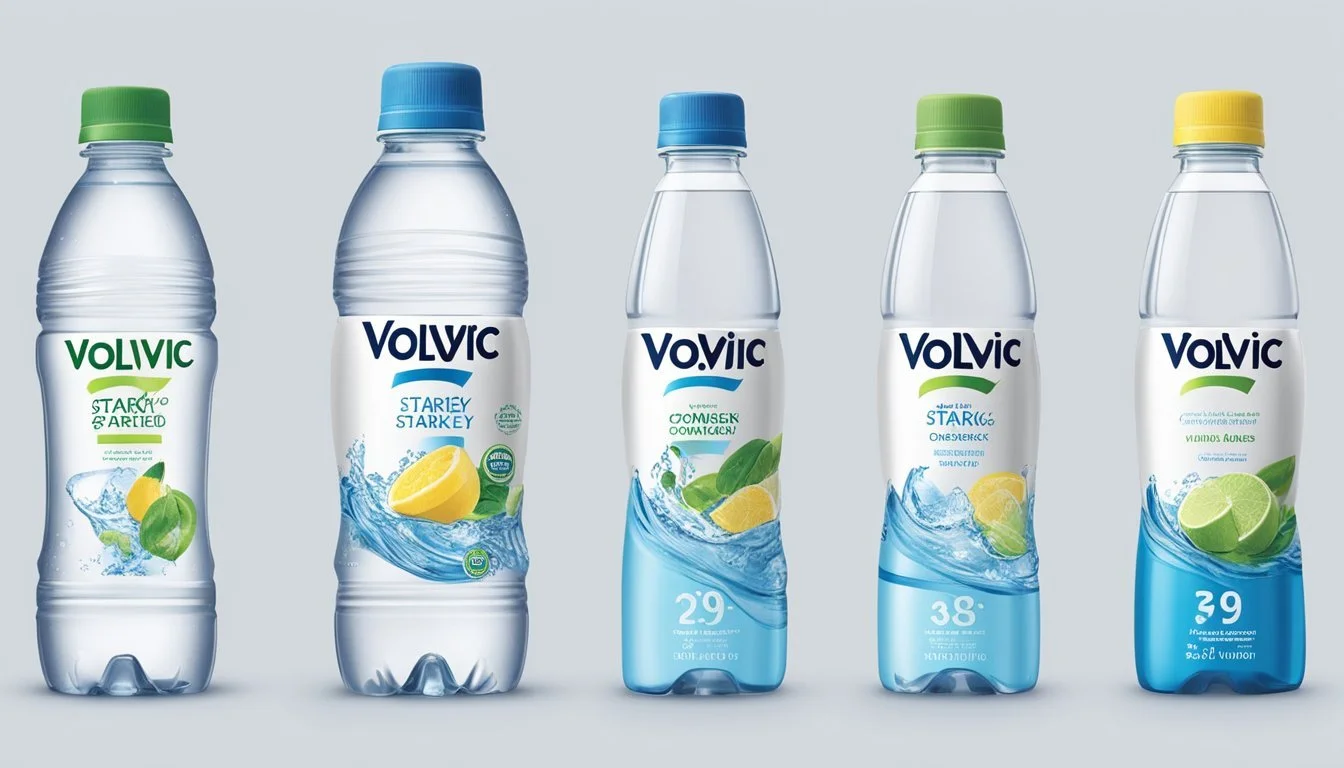Volvic vs. Starkey
Ultimate Bottled Water Comparison
When it comes to bottled water, consumers frequently debate which brand delivers the best quality. Volvic and Starkey are two prominent names in this space, each with unique qualities that appeal to different tastes and preferences. Both brands source their water from natural springs, promising purity and a refreshing drink.
For those seeking a smooth and mineral-rich taste, Volvic stands out with its high silica content and a balanced flavor profile. On the other hand, Starkey distinguishes itself with its naturally high pH level, providing a crisp and clean sensation favored by those who prefer alkaline water.
Understanding the distinguishing features of Volvic and Starkey may help consumers determine which brand better suits their hydration needs. Though preferences may vary, the choice often comes down to personal taste and desired health benefits.
Understanding Bottled Water
Bottled water comes from various sources and undergoes different treatments. Regulations ensure its safety for consumption, while varied types cater to specific preferences and health benefits.
Sources of Bottled Water
Bottled water can originate from several sources. Natural spring water comes from underground springs and aquifers where water flows to the surface naturally. Mineral water also comes from springs but contains naturally occurring minerals.
Purified water is typically municipal tap water that has undergone processing to remove impurities. Enhanced water may include added electrolytes, vitamins, or minerals to boost hydration and health benefits. Each source impacts the taste, quality, and benefits associated with the product.
Types of Bottled Water
There are several types of bottled water, each with unique attributes. Spring water and natural spring water emphasize a natural source and minimal processing. Purified water goes through extensive filtration, such as reverse osmosis or distillation, to ensure purity.
Alkaline water has a higher pH level, often claimed to aid in better hydration. Still water is non-carbonated, while sparkling waters contain dissolved carbon dioxide for a fizzy effect. Flavored water offers various tastes without added sugar or calories. Understanding these types helps consumers make informed choices based on health and preference.
Bottled Water Regulations
Regulations for bottled water ensure it is safe drinking water. In the United States, the FDA oversees bottled water, requiring it to meet standards similar to those for tap water. Labels must accurately reflect the water's source and content.
Bottled waters also face environmental impact scrutiny. Companies like Nestle and Coca-Cola have made strides toward more environmentally friendly practices. They aim to increase recyclable packaging and reduce plastic use. Consumers are encouraged to recycle and support brands that prioritize sustainability, improving the environmental footprint.
Analyzing the Brands
Volvic and Starkey are two popular bottled water brands with unique characteristics worth exploring. Their distinct origins, mineral content, and packaging set them apart.
Volvic: From the Volcanic Rock
Volvic Water originates from the Auvergne volcanic region in the French Alps. This water is filtered naturally through layers of volcanic rock, which imparts a unique mineral profile. Volvic is known for its high silica content, which is said to benefit skin, hair, and nails.
The water has a balanced pH, generally around 7.
Volvic's mineral content includes calcium, magnesium, and potassium, contributing to a mild and smooth taste. Their packaging is typically in recyclable plastic bottles, emphasizing convenience and portability.
Starkey: Springs in the Heart of Idaho
Starkey springs forth from a geothermal spring in Idaho, USA. This water is renowned for its naturally high alkalinity, with a pH level of about 9.6, making it one of the most alkaline bottled waters on the market. Starkey contains moderate levels of electrolytes, such as calcium and magnesium.
Starkey water’s mineral composition is believed to support better hydration and acid-base balance in the body. Its distinctive taste profile can be attributed to its unique mineral mix. Available in both glass and plastic bottles, Starkey aims to cater to various consumers' preferences for sustainable packaging options.
Health and Nutritional Aspects
Volvic and Starkey waters offer various health benefits, influenced by their mineral content and pH balance.
Mineralization and Body Hydration
Both Volvic and Starkey are natural mineral waters.
Volvic, sourced from volcanic regions, contains minerals such as magnesium and calcium. These minerals help maintain bone health and muscle function, making the water beneficial for regular consumption.
Starkey water, sourced from geothermal springs in Idaho, is similarly rich in essential minerals. Potassium, another crucial mineral found in Starkey, helps with electrolyte balance and muscle function.
PH Balance and Alkalinity
Volvic water has a neutral to slightly alkaline pH, typically between 7.0 and 7.5. This alkalinity may help neutralize stomach acids, aiding digestion.
Starkey, on the other hand, is considered natural alkaline water with a higher pH around 9.0. Drinking alkaline water like Starkey can help maintain the body’s pH balance and may provide antioxidant properties.
The different pH levels and mineral contents of these waters contribute to their unique health benefits, making them suitable for various dietary preferences and health needs.
Environmental Impact and Sustainability
Volvic and Starkey are committed to sustainability, but their environmental impacts differ in terms of carbon footprint, packaging, and waste management.
Bottled Water and Plastic Waste
Volvic uses plastic bottles (often PET), which are recyclable but contribute significantly to plastic waste if not disposed of properly. The brand emphasizes efforts to minimize its carbon footprint and enhance recycling rates.
Starkey, on the other hand, opts for glass bottles. Glass is 100% recyclable and often reused, making it a more environmentally friendly option. However, the production of glass has a higher carbon footprint compared to plastic.
Both brands attempt to manage their water sources sustainably. Starkey sources from Castle Rock, where water stewardship is key. Volvic aims to protect its aquifers by investing in environmental initiatives.
The choices regarding packaging and source management illustrate their efforts towards environmentally conscious operations.
Market Trends in Bottled Water
The bottled water market has seen significant growth driven by changing consumer preferences and continuous innovations. Major brands like Evian, Dasani, and Aquafina are continuously adapting to meet these evolving demands.
Consumer Preferences
Consumers today are more health-conscious and prefer purified water over regular tap water due to concerns about contamination. Products like Evian and Poland Spring have gained popularity because they focus on purity and health benefits. Grocery stores also see increased sales in enhanced water products that include added vitamins and minerals.
The demand for flavored water is on the rise, catering to those who seek taste variety without added sugars. Similarly, some consumers are looking for caffeine-infused and vitamin-enhanced options, driving the market towards more specialized offerings.
Innovations in Water Products
Innovations in bottled water are focused on offering enhanced benefits and convenience. Brands like Dasani and Aquafina are pioneering in introducing flavored and enhanced water varieties to attract a broader audience.
Packaging innovations aim at sustainability, with companies investing in eco-friendly bottles to meet consumer demand for sustainable products. Additionally, the introduction of smart bottles that track water intake shows the integration of technology and health in the bottled water market.
These trends indicate a market that is not just about hydration but also about offering added health benefits and sustainable options for the environment.
Comparison and Verdict
Ph Level:
Volvic has a pH level of around 7, making it neutral. Starkey, on the other hand, comes with a higher pH level of around 9, indicating it is more alkaline.
Mineral Content:
Volvic comes from volcanic sources in France and contains minerals like silica, calcium, and magnesium. Starkey, sourced from the USA, includes minerals such as silica and bicarbonates. The mineral content in Starkey can provide a slightly 'heavier' feel.
Taste:
Volvic has a clean and crisp taste due to its balanced mineral content. Starkey often gives a smoother and slightly 'minerally' taste, which some may find richer.
Environmental Impact:
Volvic's packaging is recyclable, with efforts towards sustainability in sourcing. Starkey also emphasizes eco-friendly practices, but the specifics vary. Always consider the impact of transporting bottled water globally.
Comparison Table:
Aspect Volvic Starkey Ph Level ~7 ~9 Mineral Content Silica, Calcium, Magnesium Silica, Bicarbonates Taste Clean, Crisp Smoother, 'Minerally' Environmental Impact Recyclable packaging, sustainable sourcing Eco-friendly practices, variable details
Each brand has unique strengths, catering to different preferences based on pH level, mineral content, and taste.
More About Volvic
Mountain Valley Spring Water vs Volvic: Which Bottled Water is Better?
Volvic vs Kirkland Signature: Which Bottled Water is Better?
Volvic vs Richard's Rainwater: Which Bottled Water is Better?
Volvic vs Whole Foods Italian Still Mineral water: Which Bottled Water is Better?
More About Starkey
Icelandic Glacial vs Starkey: Which Bottled Water is Better?
Mountain Valley Spring Water vs Starkey: Which Bottled Water is Better?
Starkey vs Kirkland Signature: Which Bottled Water is Better?
Starkey vs Richard's Rainwater: Which Bottled Water is Better?
Starkey vs Whole Foods Italian Still Mineral water: Which Bottled Water is Better?





